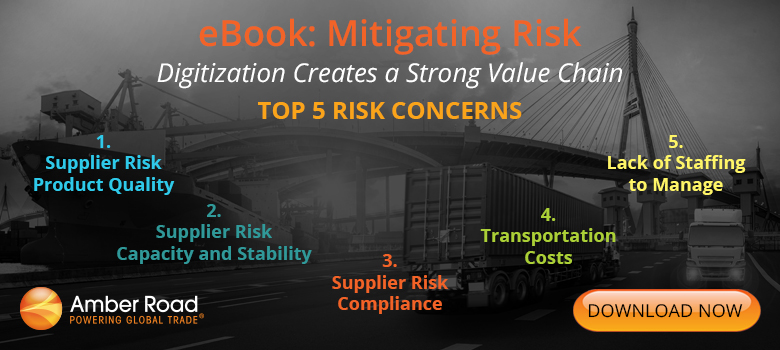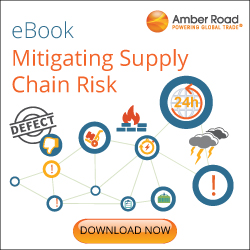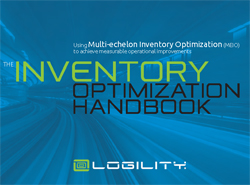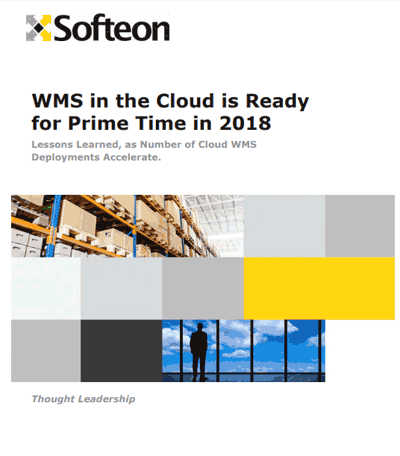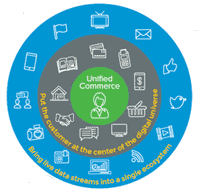LLamasoft Aims for the Top of the Supply Chain Hill
If you are a large company, you probably know LLamasoft from its supply chain design solutions. LLamasoft dominates the market for such software.
It has its sights set on a lot more. That was the obvious takeaway from my recent trip up to Ann Arbor, MI and a briefing from key members of the Amazon team, including new CEO and friend Razat Gaurav, plus co-founder Toby Brzoznowksi, long-time public face of the company and former University of Michigan baseball player, where he was on the same team with several future major leaguers, including hall-of-famer Barry Larkin.
But let's take a step back. The company was founded in 2003 by Brzoznowski and now current chairman Don Hicks as a supply chain simulation company.
| GILMORE SAYS: |
The LLamasoft position is that digitization starts by creating a digital twin of your supply chain, from which you can now get mathematical, optimized answers.
WHAT DO YOU SAY?
Send us your
Feedback here
|
It than added capabilities that since the concept developed in the mid-1970s are generally referred to as supply chain network design or network optimization.
Through a series of savvy moves and a dollop of good luck, LLamasoft has come to own that market. The smart choices included aggressively promoting the idea that it wasn't just about network design, which implies large scale analysis and sometimes daunting efforts to re-configure the supply chain network.
Instead, LLamasoft said, it's just "supply chain design," a new competency in the SCM discipline, involving a lot more focused analysis and improvements (what SKUs should be made in what plants/lines, what is the right port strategy, etc.). These decisions can drive real value, are a lot easier to implement than a full network redo, and solve every day problems.
LLamasoft also smartly focused on its product development with its core Supply Chain Guru product more so than competitors such as Insight and Caps Logistics, which were as much consulting as software. Not that LLamasoft doesn't offer consulting - the company's early focus on delivering success to customers was another key factor in its fast rise to dominance on the market.
It had a real competitor for a while in Dr. David Simchi-Levi's LogicTools, but - fortunately it turned out for LLamasoft - LogicTools was sold to ILOG which was then sold to IBM, where LogicTools got lost in the shuffle. IBM later decided to shed the LogicTools business - and sold it to LLamasoft.
That took care of one competitor. Then LLamasoft acquired part of Barloworld, which had a decent position for network design in Europe, giving LLamasoft an enhanced international presence. That means LLamasoft is about the only one left standing, "running away with this thing" as one competitor told me a few years ago.
If you go to its SummerCon user conference, the badges are like a who's who of the Fortune 500. It now has just under 800 global customers.
 But LLamasoft is hardly standing pat, as I have noted before. It is actually somewhat difficult to separate supply chain design from supply chain strategy. So in the growing number of companies that are embracing supply chain design as a core competence, setting up teams and centers of excellence, LLamasoft is there as the key tool to optimize supply chain strategies. As a result, design - powered by optimization and analytics - and strategy become nearly one. But LLamasoft is hardly standing pat, as I have noted before. It is actually somewhat difficult to separate supply chain design from supply chain strategy. So in the growing number of companies that are embracing supply chain design as a core competence, setting up teams and centers of excellence, LLamasoft is there as the key tool to optimize supply chain strategies. As a result, design - powered by optimization and analytics - and strategy become nearly one.
And even before Gaurav came on board, LLamasoft was moving to take advantage of that position in its customers. First, it developed off of the Supply Chain Guru platform a small suite of solutions that moved it into more tactical and even operational planning. That includes solutions for multi-echelon inventory optimization, transportation optimization and more recently Demand Guru - a demand planning tool positioned for use in long range forecasting but which can easily be used for traditional demand planning and S&OP support.
Starting last year and now formalized, LLamasoft is directly going after the supply chain planning market, but not as it originally envisioned when it acquired Barloworld. LLamasoft is not interested in building a new traditional planning suite, but rather seeks to enable better planning through an "app" development platform (App Studio) that provides customers a suite of tools and solvers to develop their own solutions for problems traditional planning systems aren't addressing, as evidenced by the side spreadsheet work the majority of companies still use.
LLamasoft customers had already been doing this for years on their own - the LLamasoft app platform formalizes that, making it far easier to develop apps versus starting from scratch with generic analytic environments and tools. Customers are using this platform to develop solutions ranging from a sophisticated supply-demand balancing tool at a major technology company that informs its S&OP process to dynamic daily truck routing at a major mass merchant to a form of available-to-promise capabilities at an industrial company.
The basic idea: keep your planning systems - just plug in these better answers into the existing process. But this is clearly a bit of a Trojan horse strategy here - after you build a number of these apps, with workflow tools, what is your strategic planning system really?
It should be noted that a fundamental change here is that it is only recently that a company could model its complete supply chain. I think it is usually more accurate to say there are a series of linked models rather than one galactic one, but the effect is the same in the end.
In an environment where there is much pressure to digitize the business and the supply chain, I find digitization is generally defined as a combination of technologies: 3D printing, analytics, sensors, etc.
There is also the notion of creating "digital twins" of products that electronically mirror a physical product's attributes and lifecycle. The LLamasoft position is that digitization starts by creating a digital twin of your supply chain, from which you can now get mathematical, optimized answers to a never-ending series of questions, opportunity analyses, and "what if" scenarios. To repeat from above, if LLamasoft customers increasingly think in this way, it puts the company in an incredibly strong position at those firms.
I want to mention a couple of other things: first, LLamasoft's Data Guru is a sophisticated tool for solving the long-time challenging for modeling efforts of getting good data into the system and maintaining that over time. It is very impressive, and saves much time and effort.
Second, LLamasoft is also releasing a data visualization tool - connected usually to data sources through Dara Guru - that provides a BI-type capability as a stand-alone solution, giving customers descriptive and diagnostic level analytics, versus the predictive and prescriptive levels you could say Supply Chain Guru has been delivering.
Now, a new strategy is on the way to an even stronger position. Brewing a bit before Gaurav's arrival but now accelerated, LLamasoft has developed a 5-level maturity model for supply chain design, ranging at the low end with one-off efforts to dedicated teams with repeatable processes and data maintenance. It's called the Design Competency Development (DECODE) methodology.
Users complete a survey instrument and follow up (at little or no charge) with LLamasoft consultants to nail down their current maturity - and to chart a path to greater maturity, getting at least to level 3, where the ROI from projects really take off.
By developing repeatable processes, formalizing data feeds for regular updates to support the model (e.g., supply chain costs), having the right team mix, etc., you can simply execute far more analyses over a given period, and give answers back to questions with far greater speed, in a virtuous cycle.
And guess what? The higher the level of maturity, the more a customer spends annually with LLamasoft, which moved to a subscription-only model a few years ago, as customers access additional applications, solvers, etc., each of which rings the register. The revenue bump is substantial - I know the numbers, but they were provided on a confidential basis.
LLamasoft continues to grow rapidly, expecting revenue a bit above $80 million in 2018 and north of $100 million in 2019. It has a very smart and difficult to challenge strategy, an aggressive new CEO, not much real competition in its core solution, and a very cool urban space in Ann Arbor that is almost maxed out. (I took the Ohio State sticker off my windshield for the trip.)
It will be a challenge to bring the along the consulting community it needs to fully execute the strategy; the app approach to planning is not a sure bet; and the visualization solution is in its very early stages. It's also not quite clear how far down into organizations outside the global 2000 the company can penetrate.
But the main approach of expanding use of its tools with existing customers and moving from that strategic place in the supply chain to solve other problems and opportunities further down looks formidable indeed.
Any reaction Gilmore's take on LLamasoft? What do you think of the company's strategy? Let us know your thoughts at the Feedback button below. |



![]()

![]()

![]()

![]()

